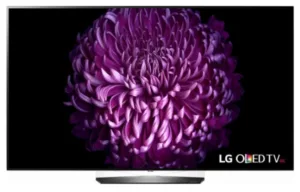I do apologize but I can’t stay away from this subject. Whatever else we can say about OLED-TVs — and there’s a lot — getting closer to the cost and price of LCD-TVs is crucial. That’s why developers have paid so much attention to “solution processing”: dissolving the active OLED materials in a solvent so thy can be jetted or printed.

Alas, solution processing has not yet provided the performance, precision, and consistency of evaporated materials, and they do not seem poised to do so in the near future.
Universal Display Corp., the developer and maker of phosphorescent OLED materials, has revived development of organic vapor jet printing (OVJP), which was invented by Steve Forrest (then at Princeton and not at the Univ. of Michigan) around 2005. The procedure was designed to combine the material quality of vacuum thermal evaporation with the flexible patterning ability of ink-jet printing. UDC’s Janice DuFour told Display Daily, “We’re in R&D, but we are also building a pilot-scale tool and looking for partners.”
But LG Display wants to push costs down in the near term, so they must do it with their current evaporated white (a mixture of blue and yellow) OLED emitter*. Is that possible?
During my visit to LG Display in Paju this July, LGD Laboratory Director, SooYoung Yoon, said that the costs are due to materials and manufacturing. So, they must make the supply chain more efficient. The size of the OLED market is small compared to that for LCDs. As volume increases year by year, material cost should go down, he said.
There were just two lines for OLED-TVs in mid-July with a capacity of 34k substrates per month, each of which can be cut into six 55-inch panels. By the end of July, Yoon said, the capacity will grow to 60k substrates per month, which will cut cut costs.
Process cost depends on manufacturing yield, Yoon continued, and the “golden yield” is 85%. OLED-TV panels have reached the golden yield more quickly than did LCD. LGD is now seeing that yield on 55-inch panels.
Yoon said these developments will produce noticeably less expensive OLED-TVs without major changes in processing technology. But solution processing is attractive for the future. “LGD has a big project on that topic,” Yoon concluded. – Ken Werner
Yesterday, the electronics retailer Best Buy was advertising this 55-inch 4K LG OLED-TV (Model OLED55B7A) for $1999.99. Are lower prices coming? (Photo: LG)
Ken Werner is Principal of Nutmeg Consultants, specializing in the display industry, manufacturing, technology, and applications, including mobile devices and television. He consults for attorneys, investment analysts, and companies re-positioning themselves within the display industry or using displays in their products. He is the 2017 recipient of the Society for Information Display’s Lewis and Beatrice Winner Award. You can reach him at [email protected].
* I have heard that the blue is actually two different blues and that means a very complex stack of different layers in the device. The OLED by white system is often described as simpler than other approaches, but IHS has said that there were 19 layers in the LG stack in 2016. I quoted this in my keynote at the Electronic Display Conference in Nuremberg in February, Prof Poopathy Kathirgamanathan of Brunel University, an OLED material expert, corrected me and said that there were now 22! (Can OLED Damage the LCD Monster? – subscription required). – Bob Raikes

